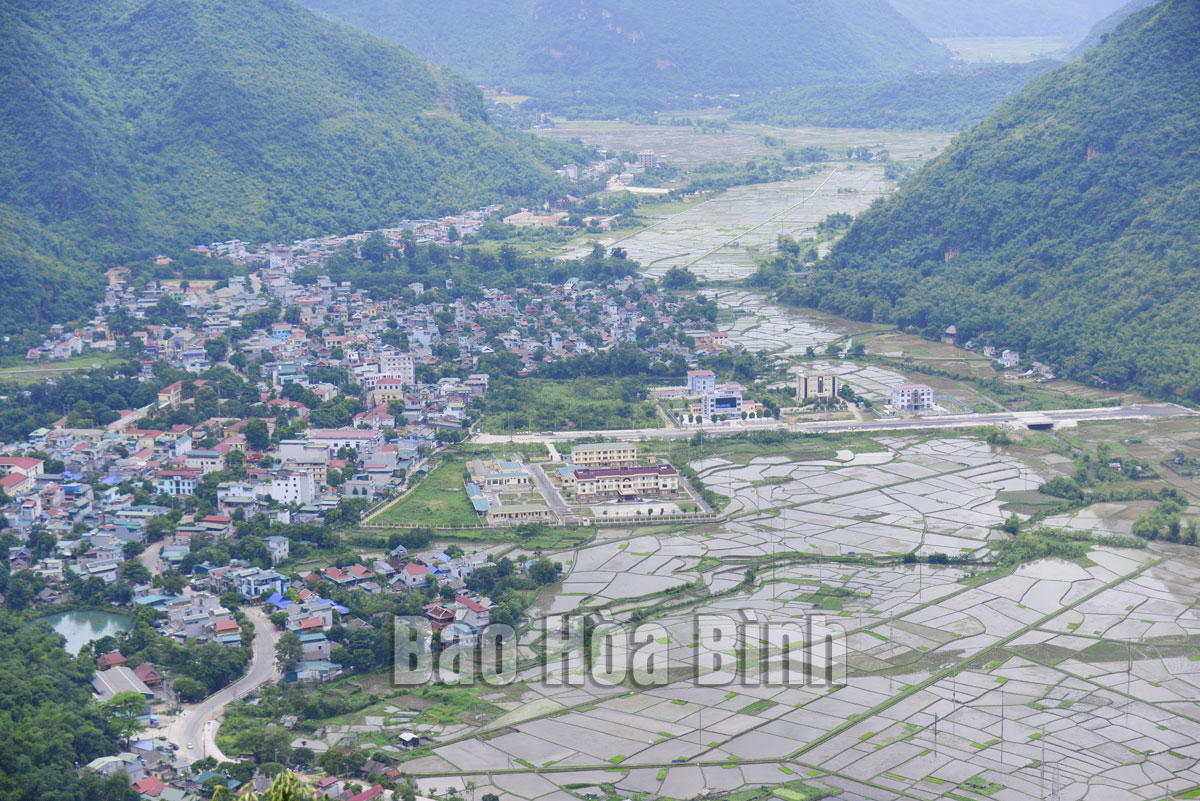
(HBO) – Developing Mai Chau into a key tourism area and an attractive, hospitable and safe travel destination of Hoa Binh province is part of the targets set at the 26th Party Congress of the district for the 2020 - 2025 tenure. Dinh Duc Lan, member of the provincial Party Committee and Secretary of the district Party Committee, has granted an interview about the issue to the Hoa Binh Newspaper.
The beauty of Mai
Chau township in Mai Chau district.
The official said the district’s Party
organisation made a detailed plan for implementing the resolutions of the 13th
National Party Congress and the 17th provincial Party Congress.
As a result, Mai Chau has managed to tap into
agricultural, tourism, and service development potential. It is currently home
to nearly 20 tourism projects, some of which have high quality such as Avana
Resort, Mai Chau Lodge, Mai Chau Ecolodge, Ba Khan Village Resort, and Mai Chau
Hideaway Resort. Many community-based tourist sites have taken shape in Chieng
Chau, Na Phon, Son Thuy, Hang Kia, and Pa Co communes.
Despite significant achievements, Mai Chau
remains a mountainous district with numerous difficulties, Lan admitted.
In the time ahead, he said, the district will
push ahead with implementing the resolutions on the Party building and the
Politburo’s Directive No. 05 on stepping up the studying and following of late
President’s ideology, moral example and style. It will also improve local Party
organisations’ leadership and combatant capacity so that the Party’s
resolutions will be carried out quickly and fruitfully.
In particular, Mai Chau will boost coordination
with relevant parties to assess potential and advantages, conduct planning, and
attract resources for infrastructure development, especially transport
facilities linking with tourist attractions. It will encourage investors to
build high-end hotels, resorts, entertainment centres, and restaurants to serve
travellers.
Besides, it will facilitate local communities’
engagement in tourism activities; propose mechanisms for supporting
disadvantaged areas, including remote areas and the communes located in the
vicinity of Hoa Binh Lake; develop agriculture in tandem with tourism products;
and effectively carry out social security policies to improve people’s material
and spiritual life.
Authorities will also instruct tourism service
providers to improve service quality; protect landscapes and the environment;
create cultural tourism products linked with local festivals, craft villages,
and communities; and build up Mai Chau as a hospitable destination with which
all visitors are satisfied when setting foot here, according to the
Secretary./.
Boasting diverse terrain, a mild climate, and rich natural resources, Cao Phong district is increasingly asserting its place on Vietnam’s tourism map, attracting both domestic and foreign visitors. The district is renowned for its stunning landscapes, majestic mountains, a crystal-clear hydropower lake, and the unique cultural identity of local ethnic groups.
With its pristine landscapes, unique cultural heritage of Muong ethnic minority, and an expanding range of visitor experiences, Tan Lac district of Hoa Binh has fast become a captivating destination for both domestic and international tourists.
Until now, Sung village in Cao Son commune, Da Bac district remains the only Dao ethnic community in Hoa Binh province to develop a community-based tourism model. Beyond its untouched natural landscapes, cultural identity serves as the cornerstone attraction for visitors.
Alongside the diverse cultural identities of the Kinh, Muong, Tay, Thai, Dao, and Mong ethnic people, Hoa Binh province is also renowned as the "capital" of the northwestern Vietnamese cuisine, offering unique and distinctive dishes. At festivals, during Lunar New Year (Tet), or on significant family or community occasions, special dishes are prepared, leaving a lasting impression on visitors.
A Phong Linh (Yellow Tabebuia) flower garden in Thang village, Thach Yen commune, Cao Phong district is currently in full bloom, drawing a large number of visitors.
Community-based tourism has been thriving in Pa Co commune, Mai Chau district thanks to advantages in natural landscape and cultural identity.



